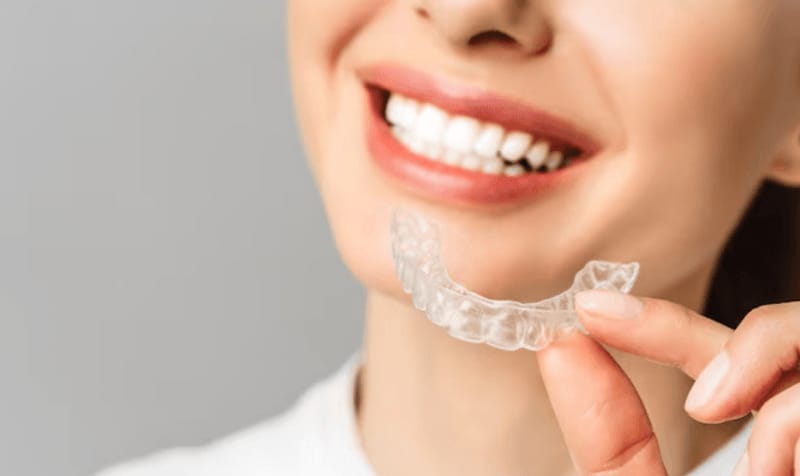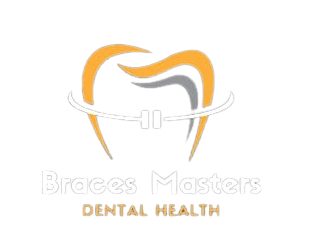Introduction
When it comes to correcting and aligning smiles, there are many reasons why people of different ages may need orthodontic treatment. So we have two popular orthodontic options here: the first is traditional metal braces, and the second is clear aligners. Both of these treatment options have their own characteristics.
However, both methods can overcome problems like misalignment, crowding, and gaps. Here, we try to explain the difference between aligners and braces so you can know which orthodontic option is best for you according to your needs and lifestyle.

Aligners
Clear aligners are tooth aligners. Many patients prefer this method since the clear plastic is barely noticeable on their teeth. Aligners are teeth-straightening trays that resemble plastic retainers. New trays get changed out routinely to move the teeth. These trays, also called aligners, are safe if approved and fabricated under the care of your dentist and/or orthodontist.
It is not safe to attempt do-it-yourself tooth aligners at home. Getting teeth aligned under the care of a dental professional can be a great option for people who are worried about the appearance of their mouth. Since you can barely notice them on your teeth, that’s a huge pron.
However, statistically, they tend to have the biggest compliance issue due to people not wearing them all day every day. You have to put them back on your teeth every time you eat. them off for longer than one hour total each day, or else you’re going to add years to your treatment plan. You know yourself best; you know if you have the discipline or not that’s required to choose these teeth straightening options.
So if you are someone who doesn’t want the responsibility for these aligners or you are worried it will take forever because you know you’ll end up forgetting to put them on every day for 23 hours each day, or maybe if you’re someone who wants them but does not qualify as a clear aligner candidate, your dentist will let you know if you are or not after your consultation.

Braces
There are a few different types of braces. Of course, there are traditional metal braces; these are the ones that most people think of when talking about braces. They are metal brackets with metal wires, and you often have a choice of color for the rubber bands that can be switched out routinely when you go to your orthodontist appointments. The rubber bands hold the wires in place around each bracket.
They are generally the most affordable option, but they are the most noticeable when you smile. Another type of braces is ceramic braces, which are very similar to metal braces but have clear brackets instead of metal brackets. They still have thin metal wires running through the brackets as well as rubber bands. Oftentimes, there is a color choice of clear for the rubber bands, or you can also go for the colors and still have less of a metal look in your mouth since the brackets themselves aren’t made of metal.
The pro of these is that they are less noticeable than metal braces when you smile. If you want to be discreet about your braces, these are a great choice. The con is that they are slightly more expensive than metal braces, and they can discolor easily if they aren’t kept clean enough.
Lingual braces are braces that attach to the back sides of your teeth instead of the front sides. so they will be placed on the sides of the teeth where your tongue and the roof of your mouth touch. Not all orthodontists place lingual braces, so it can sometimes be difficult to find a dental office offering them, and they tend to be the most expensive braces option. sometimes even more than clear aligners. In addition, they are much harder to keep clean since they are on the back sides of your teeth, and they can also feel rough on the back sides of your teeth, making them hard to get used to.
A super serious pro is that if you don’t qualify for clear aligners and you don’t want anyone to know that you have braces, you can’t see these ones at all when you smile.

Consultation Tips
No matter which option you choose, all teeth straightening requires a consultation with your dental provider beforehand. which will determine whether or not it is possible to safely straighten your teeth and, if so, which method they feel is best for your individual mouth.
Every patient is different, and we can’t stress enough how important it is to talk with your dentist about your goals for your individual mouth. They will guide you in the right direction and get you your desired results. Our best advice is to arrive at your consultation appointment knowing what your priorities are: aesthetics, compliance, and finances—things you can ask your dentist at your consultation.
What are your expectations before starting braces or clear aligners?
self-conscious about getting traditional braces. having a mouthful of metal, or are you aware of the time commitment of clear aligners versus braces? Do you have a deadline when you are hoping to finish things like that next? For compliance, consider your maturity level relating to compliance. Just be real with yourself. Are you hoping for clear aligners but, realistically, might not be ready for the responsibility? Do you foresee yourself forgetting to put them on or losing them? Be real with yourself; you don’t want to waste your time or money.
Finances
Decide on how much money you are willing to spend. Be sure to take finances into
consideration before getting your hopes up for a specific treatment every orthodontist
may have slightly different fees based on the practice’s location. It’s hard to get an estimate without getting an individualized treatment plan based on your needs first. but generally, from highest to lowest, lingual braces are the most expensive. Clear aligners and clear braces are the next most expensive, usually pretty similar in price. Last but not least, traditional metal braces are the most affordable.
Conclusion
Be sure of what you’re making when you make an educated decision about the future of your teeth; those are the only teeth you have, you know, so utilize your consultation with your dental provider to ask questions because they are the best resource for any individual concern you may have on how to safely straighten your teeth.
If you want to know more about orthodontic treatment, how braces work, what the different types are, and what braces tips are, be sure to visit the blog section of our website. You will find a lot of useful knowledge there.
Don’t forget to follow us on Facebook, Instagram, TikTok, and Twitter.

